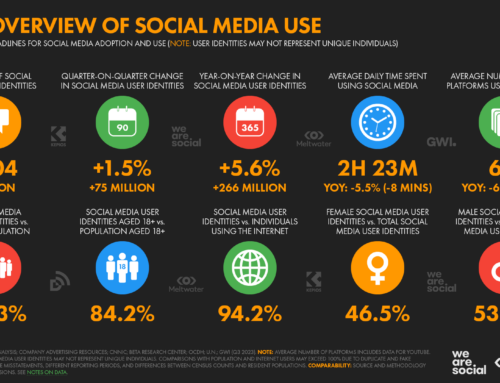 If you’ve already started incorporating social media into your communications strategy and have done any research on it at all, you’ve come across the advice to LISTEN FIRST.
If you’ve already started incorporating social media into your communications strategy and have done any research on it at all, you’ve come across the advice to LISTEN FIRST.
What you are less likely to have found in your research is a practical list of what you can actually do with all of this new-found knowledge and perspective that you gain from building your listening network.
If you really apply what you are hearing, listening can become the cornerstone of not only your nonprofit marketing strategy, but your mission-oriented programs as well. Listening helps at every level: It can help your professional community thrive, your organization prosper, your individual programs grow, and your own personal career soar.
Here are 17 concrete actions you can take using what you learn from listening.
1. Better understand the people who matter most. Find, follow, and listen to the people who you think match the personas of your target audience, whether they are potential clients, funders, donors, advocates, or volunteers. Learn more about what interests them, what kinds of questions they have, and the language they use, so you can communicate with them in more meaningful ways. It’s basic market research and if you listen for no other reason, this is the one.
2. Start conversations with potential new supporters. See who’s talking about your issues. Look at what else that person is saying online. If he looks like someone who would be interested in what your organization does, reach out to him with a personal message. Offer information or resources or invite him to an event. Open the door to a relationship just like you would to a personal friendship.
3. Answer questions and provide suggestions. People are constantly posing questions and talking about the challenges they face on social media and networking sites. Answer questions, offer suggestions, and become known as a good source of information and assistance. This is a great way to position your organization as an expert source.
4. Correct misconceptions. Is someone confused, misinformed, or worse, spreading rumors? Try to set the record straight by presenting your point of view in a non-confrontational way.
5. Find new partners. Discover who else is interested in and working on the same things you are, especially people and organizations you might have never known existed otherwise (e.g. they do what you do, but on the other side of the country). Share your successes, replicate theirs, and create new partnerships to get more done.
6. Measure the success of your communications. Are you trying to get the word out? See how well the message is spreading by monitoring who’s passing it on to others and how the message is changing as it spreads.
7. Feed your biggest fans. Build personal relationships with your biggest fans and give them what they need to spread the word about you (e.g., great stories, photos, videos, inside scoops on what’s happening in your field, etc.). These are the people who will not only introduce you to their friends and expand your circle of supporters, but also stand up and defend you and your cause if attacked by others, so keep them on your side.
8. Increase your own professional knowledge. Identify the leaders and big thinkers (I call them the “big brains”) in your field and keep an eye on the issues they are discussing and the resources they are recommending. It’s like attending a professional networking event without leaving your desk.
9. Keep tabs on your critics. Even if you choose not to respond directly now, keeping up with what your critics are saying will help you develop better rebuttals and fine-tune your messaging in the future.
10. Find your niche. It’s a competitive world, even for nonprofits (some might say especially for nonprofits when financial times are tough). By listening to what’s going on in your professional world, you’ll have a much better understanding of where you fit in, where you can fill gaps, and how you can stand out. And you must stand out – that’s what nonprofit marketing is ultimately all about.
11. Knock down your writer’s block. Not sure what to write about in your newsletter or blog? Read what others in your community are talking about and then write about the trends you see, draft a response to something you found particularly interesting or offensive, or summarize the best points others are making on a particular topic.
12. Pick up a reality check. We all make assumptions each day, but when you make too many, you know what happens: “You make an ass out of u and me.” (I thought that was so profound when I figured it out at age 10!) Road test your assumptions by putting them out there and listening to the responses you get.
13. Spot programmatic trends earlier. By consistently listening to the “raw feed” you’ll be able to pick up on trends related to your work long before they transform into conventional wisdom. You can adjust your programs accordingly, and when others finally catch up, you’ll be considered on the cutting edge.
14. Respond rapidly to flare-ups. Listening puts you higher up in your own personal fire tower, so when a potential firestorm sparks, you can get water on it much faster than if you were on the ground, miles away.
15. Learn the lingo. Learn what words your target audience is using. The language that your clients use, for example, is often very different from the language that professionals in the field use. The reverse is true too: If you are trying to break into a new community, professional or otherwise, listening is a good way to pick up on some of their jargon and buzzwords.
16. Be relevant. If you want to be considered a player in the space you are working in, you have to be relevant. And to be relevant, you have to understand where people are right now. Listening helps you keep up with what’s happening to the people who matter to your organization’s success.
17. Give good customer service. If your nonprofit is in the business of providing direct services, the people you serve are not unlike customers at a commercial establishment. Several commercial brands from Dell to Comcast are using social media listening on a near-constant, real-time basis to answer customer questions and address complaints, and you can too.
Want more? Join me for Who’s Talking About You and What Are They Saying? Listening to Online Conversations, a 60-minute webinar on Tuesday, September 8, 2009.
Have more practical uses for what to do with what you hear? Add them by leaving a comment on the blog.






